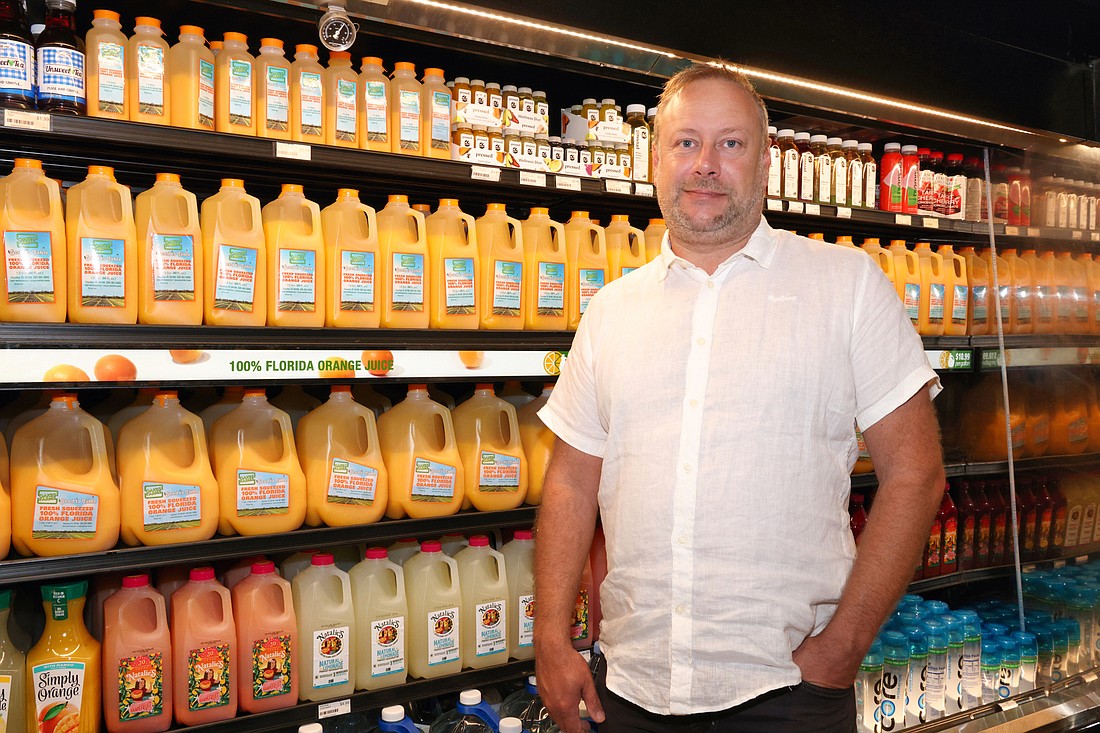- July 26, 2024
-
-
Loading

Loading

As online shopping continues to be at the forefront of the retail industry, an entrepreneur is determined to even the playing field with brick and mortar stores through immersive technology.
That entrepreneur, Henrik Andersson, with InstoreScreen LLC, first had to figure out how to incorporate digital into the in-person experience. So, he engineered LCD panels of different shapes and sizes to fit customer needs. “The key thing in retail is to inspire,” he says. “If you’re not inspired, you can just buy online.”
Andersson says the idea of designing screens fit for the retail industry came to him three years ago. In partnership with Lenovo, the idea came to life and is now being incorporated into several big brands like Walmart and Target. The screens display digital price tags, promote products and provide other types of signage. The screens are also used to capture the attention of shoppers as well as provide analytics to help the retailer appeal to those shoppers.
The company set up its technology in the Seed to Table grocery store in Naples as a prototype, so prospective clients can see the screens and how they work in real time.
The company designs touch screens, header displays, shelf displays and square displays. The displays have the capability of coming designed with sensors and cameras, which Andersson says can keep track of how many customers are visiting the store, how long they spend there and where they spend most of their time in the store.
“Theoretically, we can see if someone is stealing, is lost or needs help,” he says, adding that the technology allows retailers to find problems easily, like a wet floor that has the potential to turn into a lawsuit should a shopper slip and hurt themselves. “It’s an extra eye for your business.”
Andersson isn’t just set on grocery stores and shopping centers within the industry. “We have to think about what else we can do,” he says, with an eye toward gas stations as one possibility.
Andersson says the tech is already being deployed in Publix, a few cruise ships that sail out of the Miami port, Universal Orlando theme park, exercise bikes that come with screens and a self-serve bar called Tended Bar in Jacksonville. A handful of well-known brands have also incorporated Andersson's screen technology, including Procter & Gamble, Coca-Cola and Dwayne Johnson's ZOA Energy.
The price of the technology has, so far, been the biggest hindrance for InstoreScreen: Andersson says it costs $1.5 million to develop each new panel.
And with the company only rolling out 3,000 units a month right now, Andersson says it’s also a hurdle figuring out how much customers will pay for the technology. Once it increases the volume, he projects the cost will go down.
Marketing is another challenge. The company attends trade shows, but Andersson says the majority of the company's clients hear about the screens through word of mouth.
Perhaps the biggest challenge for Andersson alone has been finding the time to take a breath.
“You cannot stop working,” he says. “I want to do the impossible. It doesn’t have to be rocket science. You just have to make it affordable.”
Andersson doesn’t see any slowdown in opportunities, given the rise of e-commerce. “Retailers have been suffering,” he says, “so we’ve been getting a ton of requests.”
So many that the six-person team cannot fulfill all of them. “We’re trying to make everyone happy,” he says. But with five to six requests a week, there’s only so much the team can do.
The company plans to deploy a second demo store in Naples by Thanksgiving.
“To see the new possibility we have in retail, we are reinventing retail,” he says, adding he’s hoping to encourage shoppers to go back to stores. “Some retailers have given up, but others are rethinking. They have to catch the attention of customers very quickly. Nothing is impossible, if you think you can do it.”
The story has been updated to reflect the development cost of each screen panel.